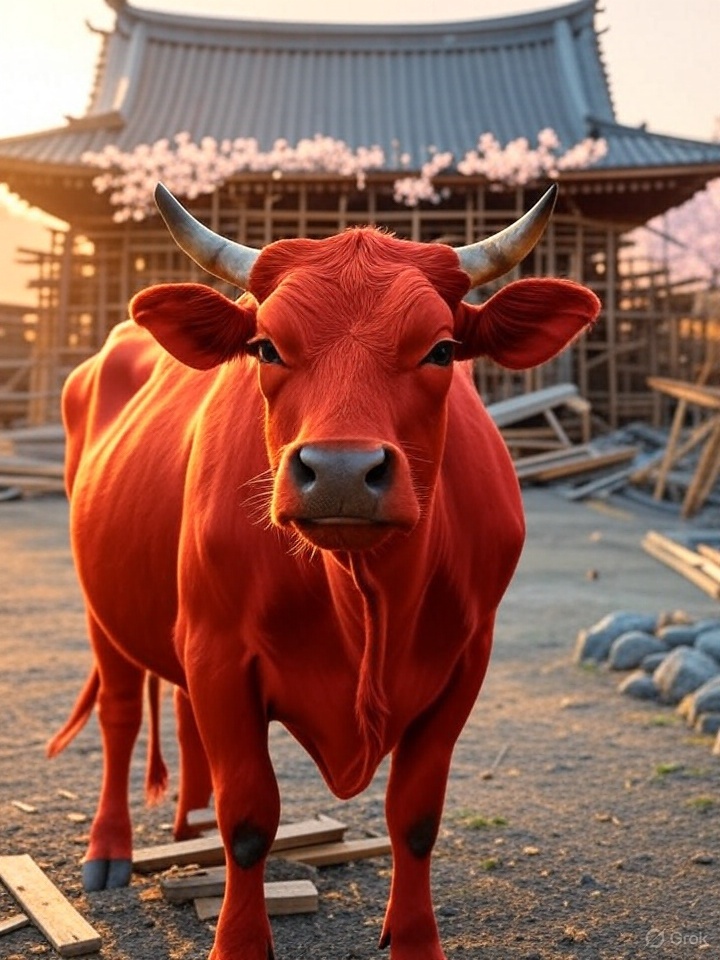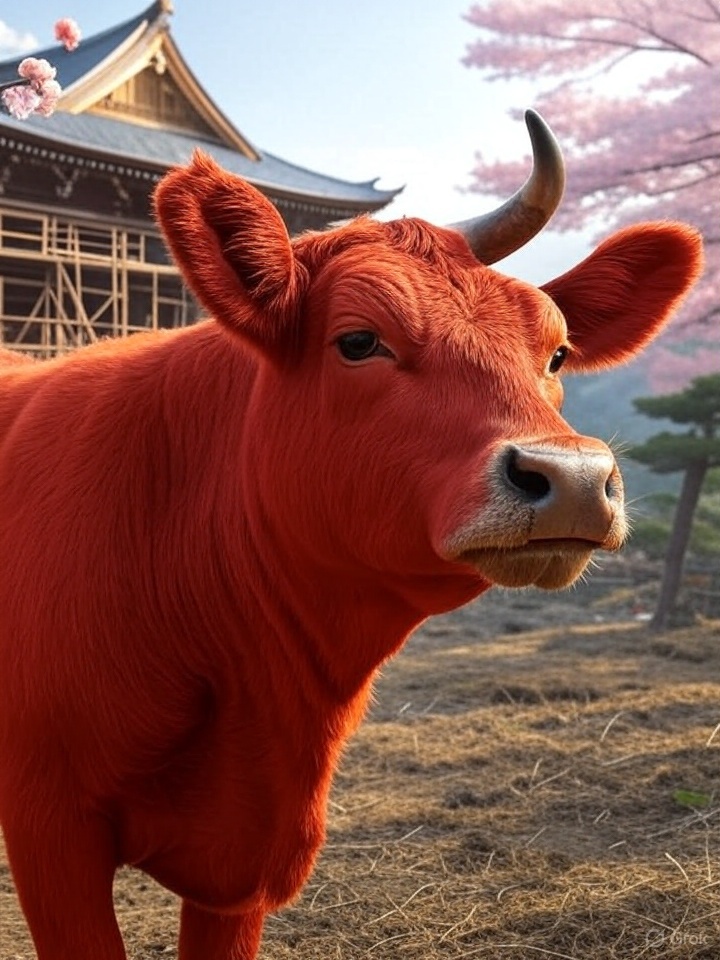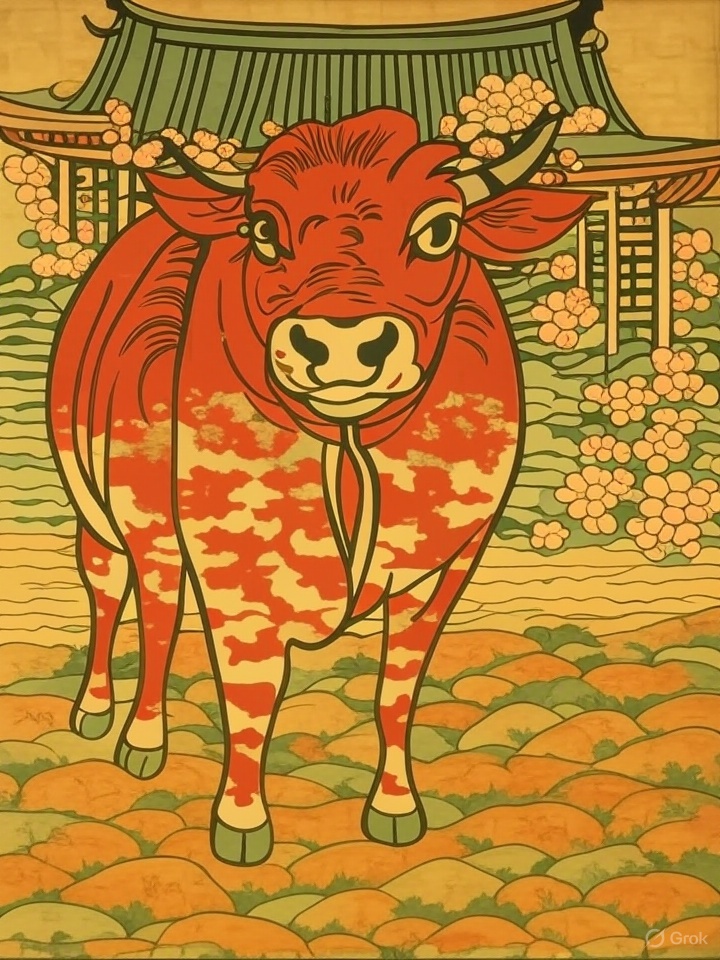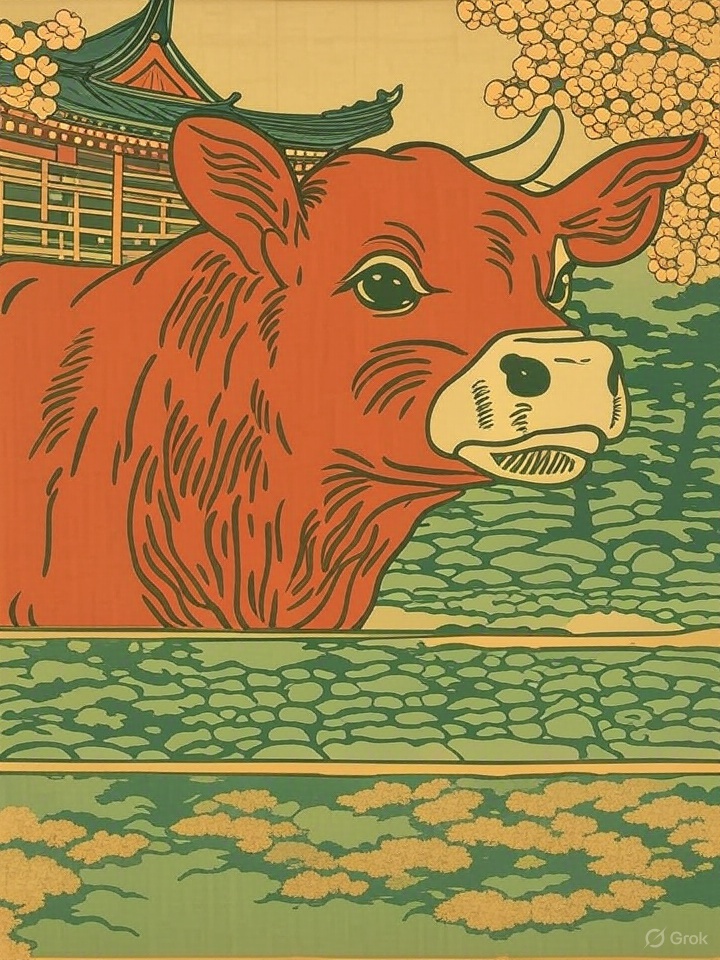Origin Legend
Overview
\n
The story of Akabeko traces back to the construction of Enzō-ji Temple in Yanaizu, over a thousand years ago during the Heian period (around the 9th century). According to legend:
- When laborers were struggling to haul heavy lumber up the mountain to build the temple, a large red cow appeared out of nowhere and began to help.
- The cow worked tirelessly and, even after the work was complete, refused to leave.
- Some say it turned to stone after the temple was finished; others believe it became a guardian spirit of the temple.
Appearance
- Bright red cow, often with black markings.
- Traditionally depicted as a papier-mâché toy with a bobbing or nodding head.
- “Beko” is a local dialect word for cow in the Aizu region.
Symbolism
- Red color: Believed to ward off smallpox and illness (similar to other red charms in Japanese culture).
- Loyalty and strength: The cow’s unwavering help during temple construction made it a symbol of devotion and persistence.
- Children's charm: Akabeko toys are given to children for health and protection.
Modern Cultural Role
- Akabeko has become a folk craft icon of Fukushima.
- It appears in local mascots, souvenirs, and even in pop culture like anime and video games (e.g., Yo-kai Watch).
- It’s often displayed in homes as a lucky charm or health talisman.



